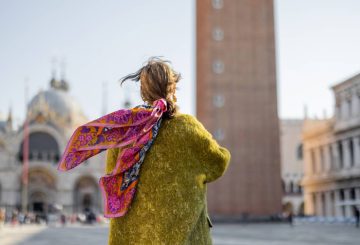Một nghiên cứu gần đây từ Đại học Purdue cho thấy New Zealand là quốc gia đắt thứ bảy khi đạt được hạnh phúc, đòi hỏi thu nhập hàng năm là 193.727 đô la hoặc 114.597 đô la Mỹ. Ngược lại, thu nhập trung bình của hộ gia đình vào năm 2022 là khoảng $117,126.
Nghiên cứu của trường đã đánh giá mối quan hệ giữa thu nhập và chất lượng cuộc sống, xác định phạm vi “thu nhập hạnh phúc” toàn cầu từ 100.000-125.000 đô la. Nghiên cứu mới nhất này xếp hạng 164 quốc gia dựa trên chi phí hạnh phúc và phân tích chi phí cho hơn 500 thành phố. S Money, một công ty trao đổi tiền tệ, đã sử dụng dữ liệu của trường đại học cho bảng xếp hạng này.
Úc vượt qua New Zealand trong danh sách này, được xếp hạng là quốc gia đắt thứ ba về hạnh phúc. Các thành phố như Brisbane và Sydney nằm trong top 10 thành phố đắt đỏ nhất toàn cầu, với chi phí hạnh phúc của Brisbane đạt 225.511 USD.
Ở mức giá rẻ hơn, Sierra Leone được nhấn mạnh là quốc gia có giá cả phải chăng nhất về sự hài lòng với 14.711 đô la mỗi năm. Ngoài ra, Bucaramanga ở Colombia mang lại hạnh phúc chỉ với 16.900 đô la Mỹ mỗi năm, khiến nó trở thành thành phố tiết kiệm chi phí nhất trên toàn thế giới.
Tại New Zealand, Auckland là thành phố tốn kém nhất cho hạnh phúc, đòi hỏi 207.000 đô la mỗi năm. Trong khi đó, Christchurch, thành phố Kiwi giá cả phải chăng nhất trong nghiên cứu, đòi 180.000 đô la mỗi năm.
Mặc dù có mối liên hệ giữa hạnh phúc và chi phí sinh hoạt, số tiền cần thiết để che chắn khỏi “bất hạnh” cũng rất quan trọng. Iran được xác định là quốc gia đắt đỏ nhất thế giới để đạt được hạnh phúc, với chi phí được đặt ở mức 239.700 đô la Mỹ, mặc dù thu nhập trung bình thấp hơn đáng kể.
Hơn nữa, cuộc tranh luận lâu dài về việc liệu tiền có thực sự có thể mua được hạnh phúc hay không. Theo Khoa Tâm lý học Harvard, mối quan hệ giữa sự giàu có và niềm vui là tối thiểu. Tuy nhiên, kỳ nghỉ được coi là một khoản đầu tư đáng kể cho những người tìm kiếm hạnh phúc. Giáo sư Daniel T. Gilbert của Harvard cho rằng niềm vui khi dự đoán một kỳ nghỉ thường vượt qua trải nghiệm thực tế. Những chuyến đi nhỏ, thường xuyên được cho là mang lại nhiều hạnh phúc hơn một vài chuyến đi lớn, xa hoa.





























































